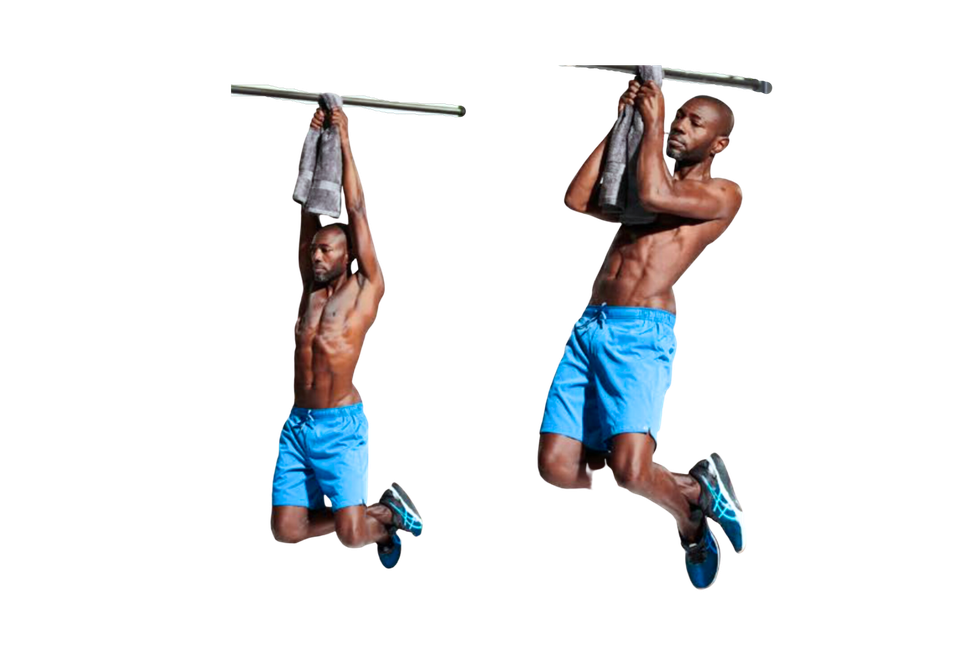Dead Hang Exercise Benefits A Simple Move for Strength Posture and Stress Relief
Why Simple Fitness Trends Work
In fitness, not every effective exercise has to be flashy or complicated. Some of the best results come from movements that are surprisingly simple. One of those is the dead hang exercise—a move that’s recently gone viral on social media but has actually been around for decades in strength training and calisthenics.
Unlike heavy gym machines or intense HIIT routines, the dead hang only requires a sturdy pull-up bar and your body weight. Despite how basic it looks, it can transform your grip strength, posture, and shoulder mobility, while also giving your mind a surprising sense of calm.
What Exactly Is a Dead Hang?
A dead hang is as straightforward as it sounds: you grab a bar, let your body hang freely with arms straight, and hold the position for as long as you can. While it might look like a passive rest, your forearms, shoulders, lats, and core muscles are working hard to keep you stable. At the same time, your spine gets a nice stretch, almost like a natural traction session.
This is why so many people are adding it to their home workout routine or slipping it into the end of their gym sessions—it’s quick, effective, and doesn’t need fancy equipment.
The Top Dead Hang Benefits
1. Stronger Grip for Everyday Life
If you’ve ever struggled to hold heavy grocery bags or felt your hands slip during a pull-up, improving grip strength is a game-changer. Dead hangs directly target your forearms and hand muscles, making your grip stronger over time.
That strength carries over into other workouts like weightlifting, climbing, and rowing, but it’s just as helpful in daily life too.
2. Looser, Healthier Shoulders
Tight shoulders are a common side effect of sitting at a desk or scrolling on your phone. Dead hangs give your shoulder joints a deep stretch, helping them move more freely. Over time, this can reduce stiffness and protect you from injuries like impingement.
No wonder people searching for shoulder mobility workouts often come across dead hangs—they’re simple, but very effective.
3. Better Posture Without Fancy Gadgets
Slouching over a laptop for hours? You’re not alone. The dead hang naturally decompresses your spine and helps your back return to its neutral alignment. It’s one of the best exercises for posture because it stretches the right muscles and strengthens the ones that keep you upright.
4. A Core and Back Strength Boost
Even though you’re just hanging there, your abs and back muscles are firing up to keep you stable. That makes dead hangs a great foundation if you want to progress into pull-ups, chin-ups, or more advanced calisthenics exercises.
For people looking for a no-equipment workout that still hits the core and back, this move is a must-try.
5. Stress Relief for the Mind and Body
Here’s something most people don’t expect: dead hangs are also great for stress relief. When you’re hanging on the bar, focusing on your breathing and resisting the urge to drop, you practice patience and mental toughness.
Many describe it as a mini reset for both body and mind—something we could all use during busy workdays.
How to Do a Dead Hang Safely
Getting started is easy, but proper form is key:
-
Grab a Pull-Up Bar – at the gym or a doorway bar at home.
-
Set Your Grip – hands shoulder-width apart, palms facing forward.
-
Engage Your Core – don’t just dangle; keep your abs tight.
-
Hang With Control – let your body stretch, but avoid swinging.
-
Breathe Steadily – deep, calm breaths make it easier to hold.
-
Start Short – aim for 15–20 seconds and build up to a minute.
Variations to Keep It Interesting
-
Active Dead Hang – pull your shoulders down and engage lats for extra strength work.
-
Single-Arm Dead Hang – advanced version for grip and core endurance.
-
Weighted Dead Hang – add a belt or vest once basic hangs feel easy.
-
Mixed Grip Hang – switch hand positions to build balance.
These variations make dead hangs adaptable, whether you’re a beginner or more advanced in your strength training workout.
Who Benefits Most From Dead Hangs?
The beauty of this exercise is that almost anyone can do it:
-
Beginners who want a simple introduction to bodyweight training.
-
Athletes who need extra grip strength for climbing, CrossFit, or martial arts.
-
Office workers who sit for hours and need a quick posture fix.
-
Older adults who want to maintain flexibility without high-impact workouts.
Mistakes to Watch Out For
Even with such a simple move, a few common mistakes can reduce benefits:
-
Shrugging your shoulders too high (leads to neck strain).
-
Swinging or kicking your legs (takes tension off your grip).
-
Hanging too long before you’re ready (can overstrain tendons).
Start small, listen to your body, and build consistency instead of pushing too hard on day one.
Adding Dead Hangs to Your Routine
You don’t need to dedicate an entire workout to this move. A few smart ways to add it in:
-
After workouts as a grip finisher.
-
During work breaks to reset posture.
-
Before pull-ups as a warm-up for the shoulders and core.
Just 2–3 sets of 20–30 seconds a few times per week is enough to start noticing improvements.
Final Takeaway Small Effort, Big Results
The dead hang exercise benefits go way beyond grip strength. In just a few minutes a day, you can ease shoulder tension, improve posture, strengthen your core, and even reduce stress.
For anyone looking for simple fitness tips, no equipment workouts, or ways to combine mental health and fitness, this one exercise checks all the boxes.
Sometimes the most powerful changes come from the simplest moves—and the dead hang is proof of that.














0 Comments